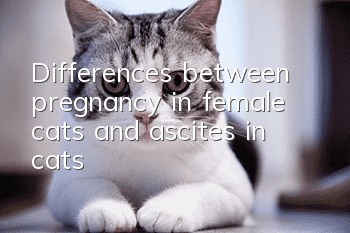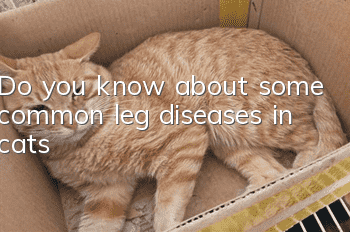Differences between pregnancy in female cats and ascites in cats

The difference between female cat pregnancy and feline ascites is: First, pregnant female cats generally have a good appetite and energy, while cats with feline ascites generally have poor appetite and energy. Secondly, when the abdomen of a pregnant female cat is palpated, the intrinsic sexual organs or fetus can be felt, while a cat with ascites will have obvious fluctuations when the abdomen is palpated. In addition, through B-ultrasound examination, it can also be found that generally pregnant female cats will see fetuses or normal organs in the abdomen, while B-ultrasound examination of cats with ascites will reveal flaky dark fluid areas.
1. Cat pregnancy
1. In the early stages of pregnancy, cats will have symptoms such as decreased appetite, quietness, and no longer tolerate male cats mating.
2. Around the 20th day of pregnancy, the cat’s appetite will increase and its abdominal circumference will be slightly arched. At this time, attention should be paid to providing the cat with appropriate nutrition.
3. On the 30th day of pregnancy, the cat’s abdominal circumference can be significantly increased, and the hair around the cat’s nipples begins to fall. At this time, you can take the cat to the pet hospital for a B-ultrasound examination to check the pregnancy status and fetal status.
4. The cat’s nipples will become red and swollen on the 45th day of pregnancy, and the cat’s breasts near the hind legs will droop. At this time, you can take the cat to the pet hospital for a DR check to check the number of fetuses and the expected date of delivery.
Note: During the cat’s pregnancy period, it is necessary to restrict the cat’s large movements to prevent accidental miscarriage. In addition, when a cat is pregnant, its nutritional needs increase, so the owner needs to supplement the cat's nutrition appropriately. It is recommended to mix and feed the cat appropriately, and pay attention to supplementing nutrients such as protein and calcium.
2. Cat ascites
1. Ascites in cats is a pathological symptom. Cats usually experience symptoms such as decreased appetite, depression, and pain. More ascites may also cause breathing difficulties. Owners need to pay attention to this situation, and it is recommended to consult a professional pet doctor in time and receive treatment.
2. Cats suffering from ascites will also experience a significant increase in abdominal girth. At this time, it is recommended that the owner take the cat to the pet hospital for abdominal palpation examination in time. There will be obvious fluctuations. At the same time, the cat can be subjected to abdominal B-ultrasound examination. It will be found that cats with ascites will have large liquid dark areas and may also see floating Intestine in liquid.
Note: Feline ascites is a serious cat disease with a high fatality rate. When a cat shows the above symptoms, the owner should take the cat to the pet hospital for symptomatic treatment in time to prevent delaying the condition and damaging the cat's health.
- What are the reasons why cats sneeze?
- Do female cats have to be neutered? These conditions will occur if the female cat is not neutered!
- What cat did the Ragdoll come from?
- What to do if your cat has ear mites
- What does the silver gradient look like with a blue cat?
- Which cat is best to breed with Siamese cat?
- Why do cats roll in catnip?
- Can cats eat kelp and pork ribs soup?
- Somali cat personality traits
- How to wash a cat's paws if he steps in poop



